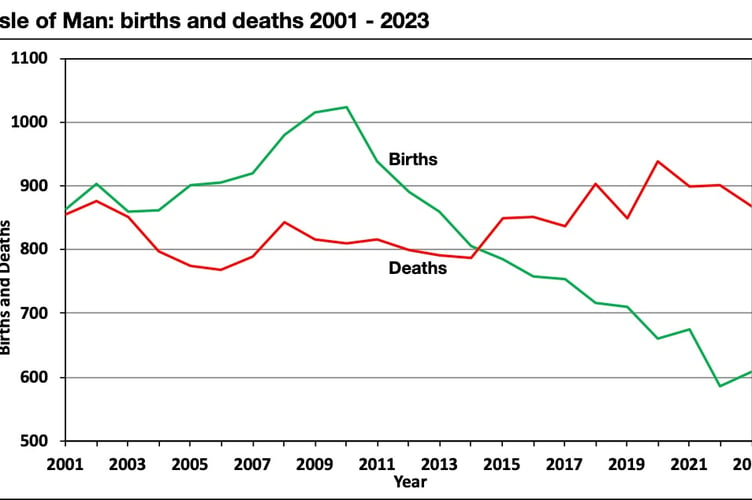Evidence suggests the island’s population has reached a new record high.
Statistics indicate the number of residents has topped 84,500 for the first time.
Paul Craine MLC, author of the Manx Population Atlas, has done the number crunching using the latest available data.
This shows the Isle of Man continues a decade-long trend of having no natural population growth, as deaths have exceeded births each year since 2014.
But net inward migration is outweighing natural population decline and slowly helping the population to grow – and the influx of younger adults and families is helping also to rebalance what has been an increasingly ageing population.
Mr Craine said: ‘There is a long way to go but the picture that is emerging is encouraging.

‘The big picture is that whilst births are still low, there is clear evidence of net inward migration. The population is slowly growing and it is likely that the population total is the largest ever in the Isle of Man.’
The Population Report 2023 produced by Statistics IoM in October 2023 (based partly on the ‘experimental’ use of income tax data) estimates the population had grown by more than 460 people between the 2021 Census and the end of the first quarter of 2023.
This suggested a resident population of over 84,500, which, if correct, means the population has exceeded the 2011 Census figure for the first time.
This was despite deaths still exceeding births. Recently-released data shows there were 609 births and 867 deaths in 2023. In 2010 there were 1,023 births but this figure fell for 10 consecutive years and by 2022 there had been a 43% drop in births recorded over just 12 years.
It was the scale of this decline that prompted the setting up of a Tynwald select committee on population rebalancing. In 2023 births showed the largest increase in 14 years and rose above 600.
Statistics IOM suggest the population growth is the result of positive net migration, estimating that since the last census in 2021, 3,700 people had moved to the island and 2,700 residents had moved away.
‘Those arriving were younger on average than those who had moved away.
Labour market data shows the number in employment in the second half of 2023 was higher than at any time since December 2010.
Evidence of net migration growth is strengthened by annual school roll data which show total growth across the nine year groups of over 180, or 2.3% in two years.

.jpeg?width=209&height=140&crop=209:145,smart&quality=75)
-(2).jpeg?width=209&height=140&crop=209:145,smart&quality=75)


Comments
This article has no comments yet. Be the first to leave a comment.